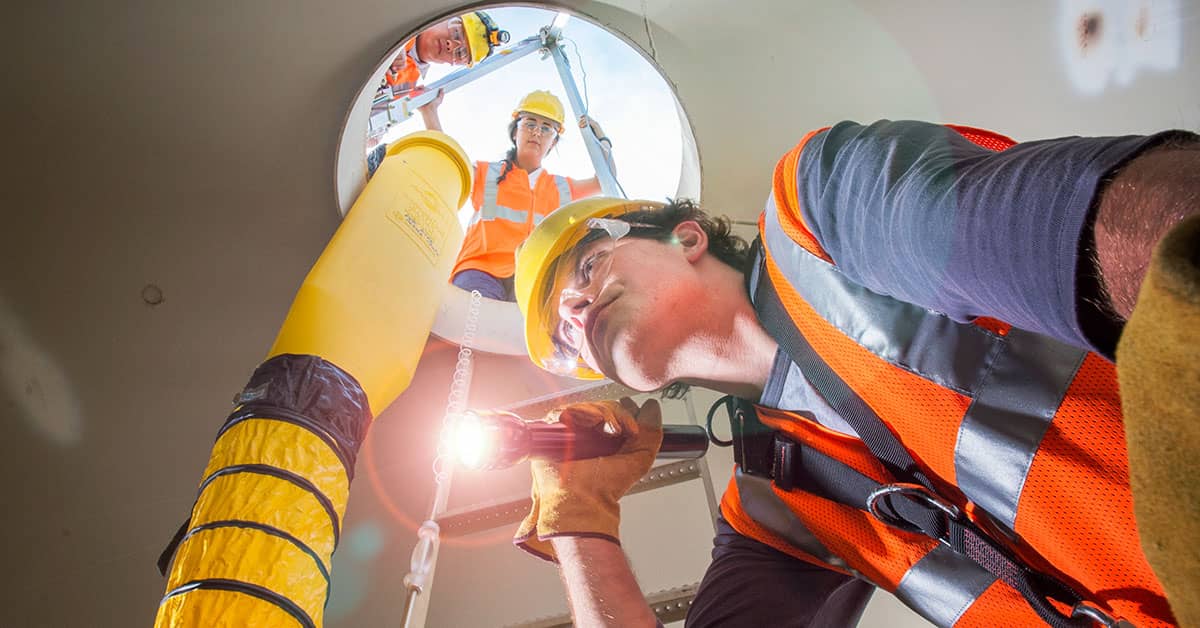Definitions key to understanding permit space entry
Date Posted: 09/12/2022

OSHA’s standard for permit-required confined spaces often raises questions on the difference between a “confined space” (also called a non-permit space) and a “permit-required confined space” (also called a permit space).
OSHA defines a confined space as one that meets the following criteria:
- Large enough for an employee to enter and work;
- Limited or restricted means of entry and exit; and
- Not designed for continuous occupancy.
OSHA doesn’t regulate employees in non-permit spaces. Those areas may be awkward to work in, but they don’t pose a significant threat. On the other hand, a permit space is a confined space that has one or more of the following:
- Contains or has a potential to contain a hazardous atmosphere;
- Contains a material that has the potential for engulfing an entrant;
- Has an internal configuration that could trap or asphyxiate an entrant by inwardly converging walls or a floor which slopes downward and tapers to a small cross section; or
- Contains any other recognized serious safety or health hazard.
Employers must identify any permit-required confined spaces and inform exposed employees by posting signs or using other effective means to identify the existence and location of (and the danger posed by) the permit spaces.
If employees will enter a permit space, the employer must develop a program to protect them from those hazards. A permit space program regulates entry and outlines the conditions that must be met to allow employee entry.
Entry or not?
Be aware that “entry” does not necessarily mean crawling into the space. OSHA says that “entry” occurs “as soon as any part of the entrant’s body breaks the plane of an opening into the space.” Even reaching an arm into a permit space could be considered “entry.”
If employers do not allow entry, they must take steps to prevent employees from entering permit spaces. They must still inform workers about the spaces, evaluate non-permit spaces following changes in their use or configuration, and cooperate with contractors who will enter the permit spaces.
A good practice is to bar or lock the potential entry portals. In fact, OSHA has said that posting signs is not required if the only means of access requires using tools or keys, provided the employees expected to gain entry (if any) are trained.
How Safety Management Suite Can Help
If your employees enter permit spaces, they need to understand the risks. To learn more watch our webcast Permit-Required Confined Spaces: Understanding the 4 worker roles and responsibilities from September 15, 2022. We covered employees’ roles and duties regarding permit-required confined space work. Many employers tend to focus on the authorized entrant, but other roles include the entry supervisor, attendant, and rescuer. Log in or register for a free trial and access the webcast archives today!
E-mail Newsletter
Sign up to receive the weekly EHS Insider email newsletter for safety articles, news headlines, regulatory alerts, industry events, webcasts, and more.